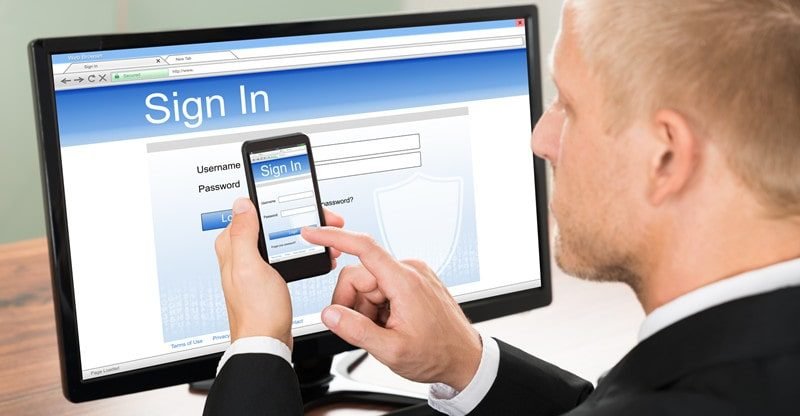

Based on studies, a median individual has 90 on-line accounts. And 29% aren’t even certain what number of they’ve. That’s the state of our on-line account actions. And the pandemic has made issues worse. Many people, it appears, have 25% extra account passwords after COVID-19 than we did earlier. Clearly, the pandemic restrictions that drove individuals indoors have additionally led them to devour extra digital providers and left them with much more on-line accounts.
And this has now turn out to be a rising concern for a lot of people. Password safety, particularly, is going through growing threats from cybercriminals, who’ve been launching assaults with twice the vigor through the international well being disaster. So, the extra accounts you’ve gotten, the upper the dangers of an account breach and numerous ensuing threats.
However, what kind of accounts are we speaking about?
The reality is, any account could possibly be compromised with a safety menace. Nevertheless, there are a number of account sorts which are in excessive utilization. And consequently, they appeal to extra cyber villains. Listed here are the commonest account classes that demand extra of your consideration.
• E-mail accounts – There are greater than 3.9 billion energetic e mail customers worldwide. Gmail alone claims 1.8 billion of them. And many individuals have at the least one e mail account in use for work and private actions.
• Social media – Over 3.8 billion persons are on social media as of 2020. That’s greater than half the worldwide inhabitants. So, you’d doubtless have profiles arrange in a number of social media platforms, too, from Fb and Twitter to Instagram and TikTok.
• Financial institution accounts – The month-to-month soar in new cellular banking registrations has been as a lot as 200% for some banks following the COVID-led stay-at-home orders. Digital banking adoption has accelerated at an epic scale, with many individuals now having on-line banking entry.
• On-line purchasing – The pandemic has additionally seen on-line gross sales surge for eCommerce marketplaces like Amazon, whereas excessive avenue retailers scrambled to strengthen their digital presence, too. The result’s inevitable: extra individuals proudly owning a number of on-line purchasing accounts.
• Leisure – Many individuals have additionally sought consolation in digital leisure as they stayed stranded indoors for essentially the most a part of 2020. This implies extra accounts and subscriptions for film streaming websites comparable to Netflix, music and gaming web sites, in addition to others on this class.
• Information websites – If you happen to favor to devour information digitally with a day by day publication from a website like Quartz or by searching a information web site comparable to CNN, you then would have naturally signed up for a private account with them, too.
• Units, apps, and software program – The common units you utilize, out of your smartphone and laptop computer to your smartwatch, in addition to apps and software program put in on them, can have a number of accounts together with your private particulars. Simply take into consideration Microsoft accounts, Apple IDs, communication apps like WhatsApp and Zoom, and even these health apps that monitor your day by day step depend, coronary heart fee, or the variety of hours you sleep.
Fast steps to guard your accounts
If you happen to’ve written down an inventory of all private accounts you personal proper now, you then doubtless have an thought of the large digital knowledge path you’ve created consequently. And in case you’re feeling overwhelmed simply excited about knowledge safety, listed below are 4 fast steps to guard your accounts from unwelcomed prying.
1. Use dependable passwords to arrange a robust first line of protection.
Passwords present a simple protecting barrier to maintain your accounts protected. However it’s the only most uncared for device by many account customers. Based on a Harris Ballot research, an alarming 66% of People use the identical password for e mail, on-line banking, and social media accounts. Many are even utilizing widespread phrases and simply guessable data comparable to their birthday in them. These errors could possibly be detrimental to your account safety.
So, make sure you undertake sound password practices. Notably be careful for password size and utilizing several types of characters. Two-step verification is even higher to make it tougher for cybercriminals to entry your accounts.
2. Maintain accounts non-public.
How you retain your accounts non-public will depend upon the kind of accounts you maintain. In fact, as a primary step, keep away from oversharing or publicizing your account particulars. As an illustration, strive to not give out your private e mail handle to register for providers and advertising and marketing promotions. Maintain a separate e mail to make use of in such cases.
Many of those accounts may even include privateness settings. These may let you cover your profile from serps like Google and decide out of information assortment and sharing.
3. Defend your digital actions.
You also needs to keep away from undesirable spying in your account actions if you wish to hold them safe. So, use a VPN to encrypt knowledge and hold your digital presence nameless. Additionally, keep away from cookies to stop pointless knowledge monitoring. Browser security is equally important. Delete cookies, browser historical past, and cached information each few days.
4. Maintain an eye fixed out for suspicious actions.
Common monitoring is crucial to establish early warning indicators of an account breach. So, stay vigilant and undertake proactive measures to detect uncommon actions. Google, for instance, will allow you to test when and the way your Gmail accounts have been accessed.
As well as, you’ll be able to monitor despatched emails in your outbox and posts on social media accounts. You also needs to evaluation your financial institution statements and credit score studies as soon as a month for any unfamiliar actions. Instantly examine in case you discover something suspicious.
Minimizing account utilization is all the time the best choice in case you’re nervous about knowledge safety. Reduce down on extra profiles you’ve created and restrict your account portfolio to what’s completely important. If you happen to’re having bother figuring out which accounts to shut, weigh up the potential safety threats towards the extent of comfort and ease every account may provide. If it’s not well worth the threat, then it’s time to delete it.





